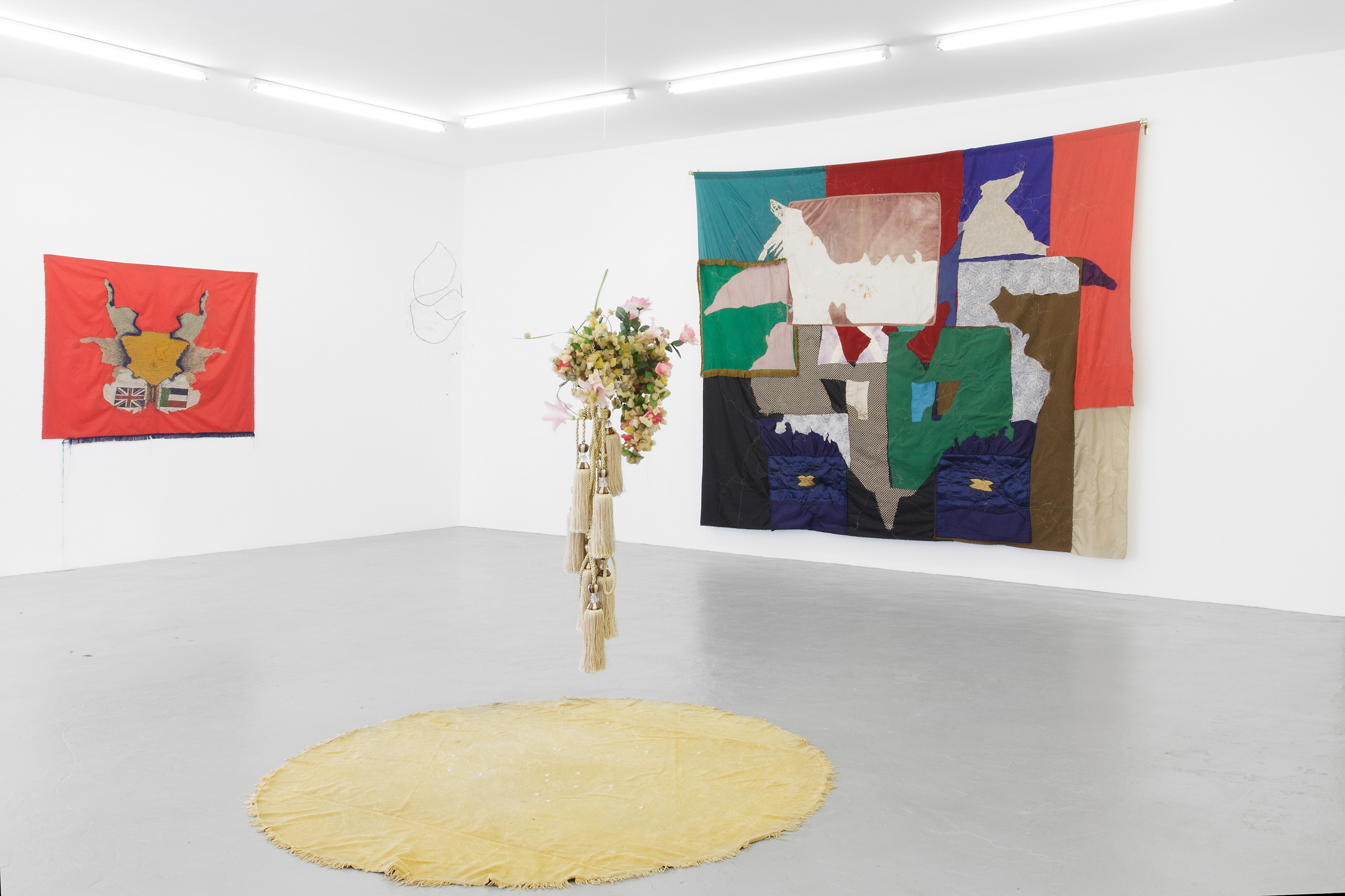
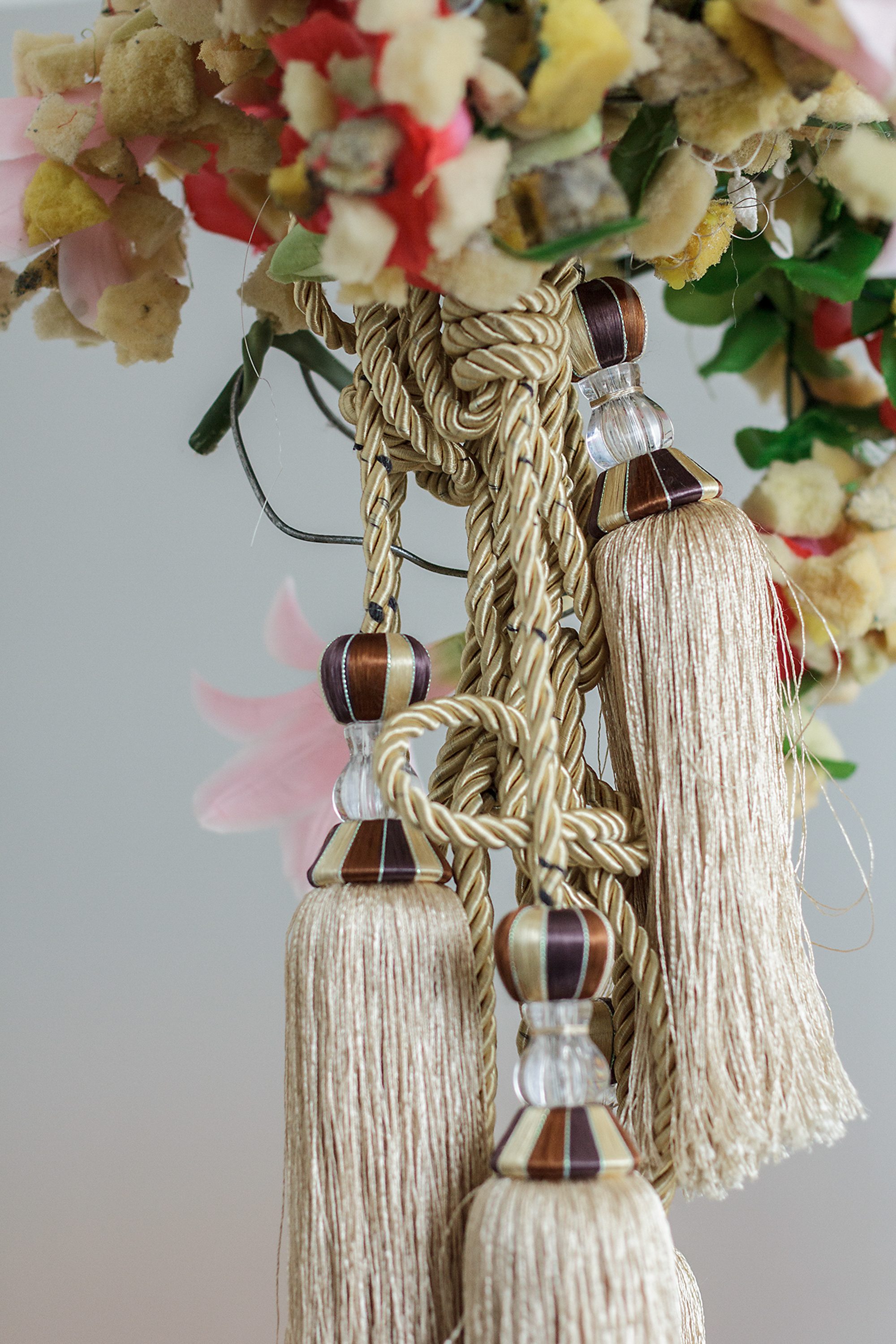

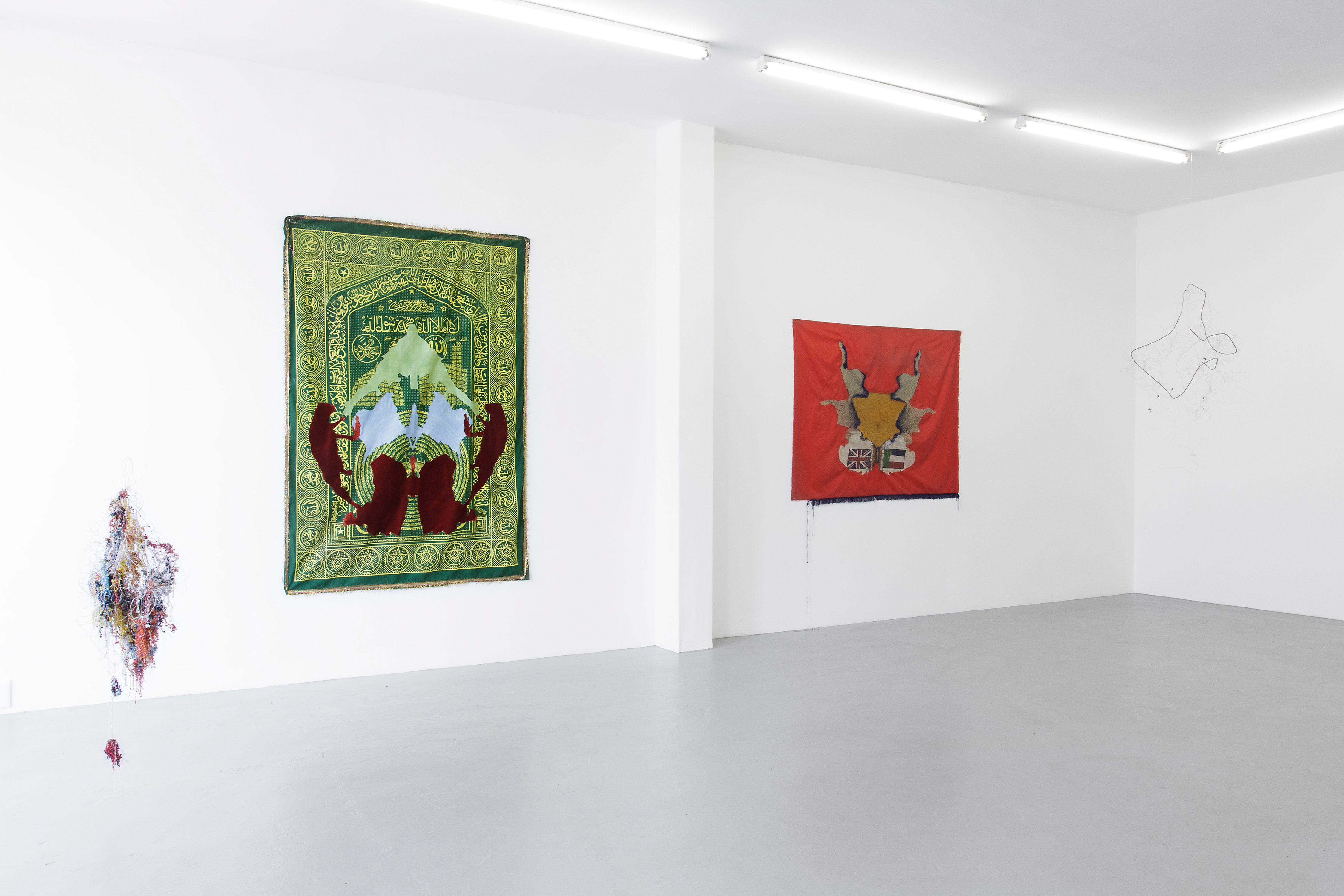

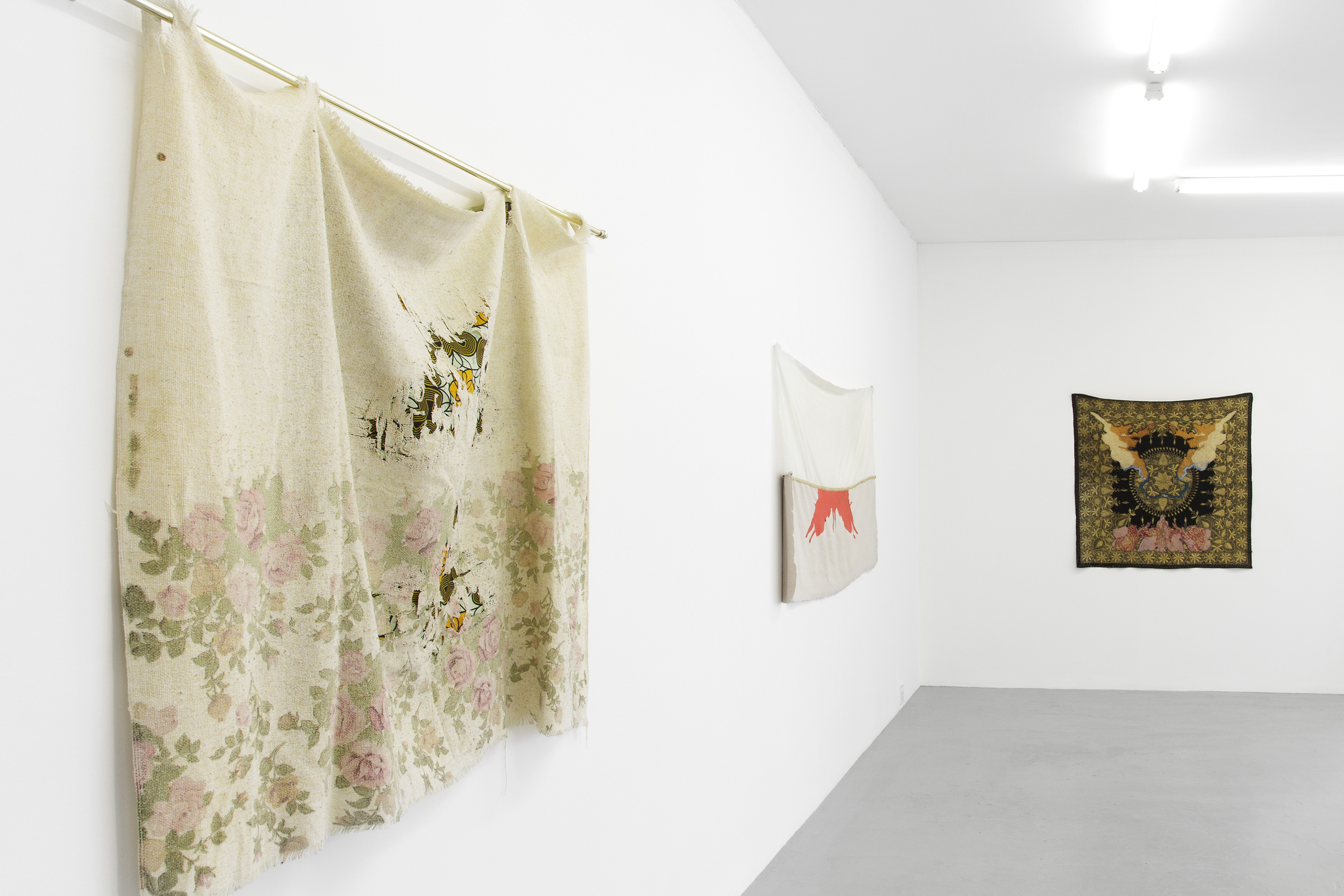
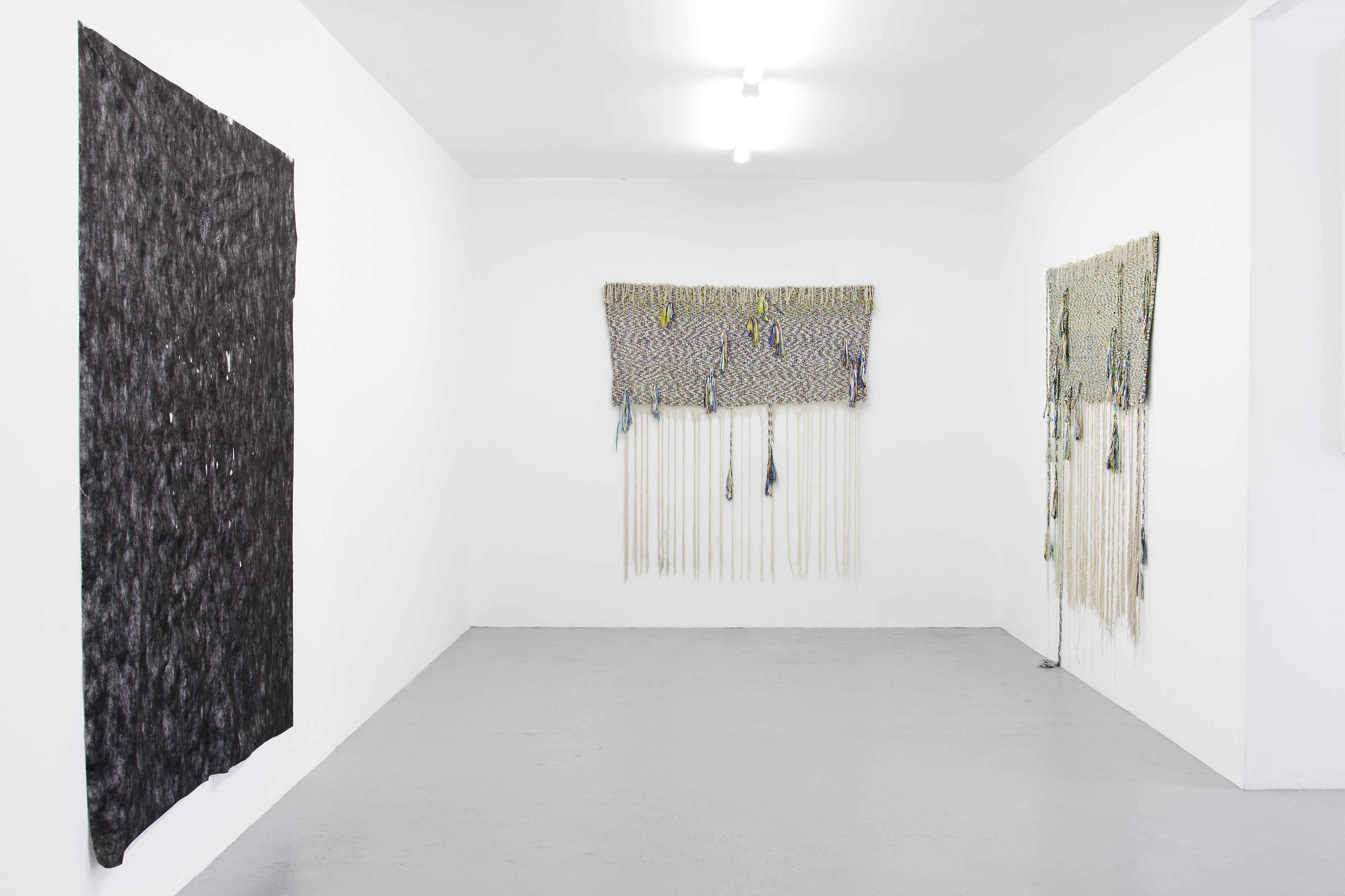
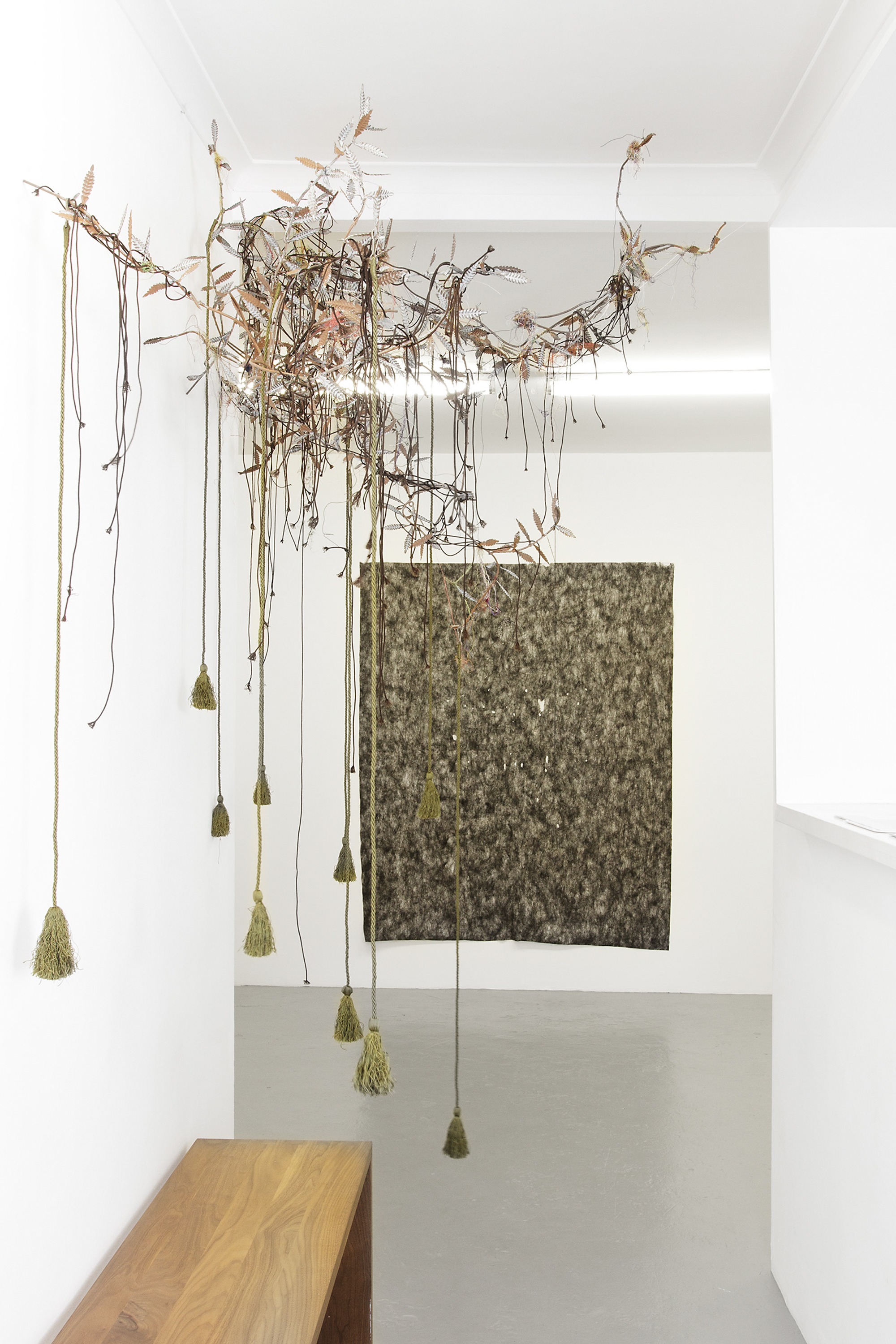



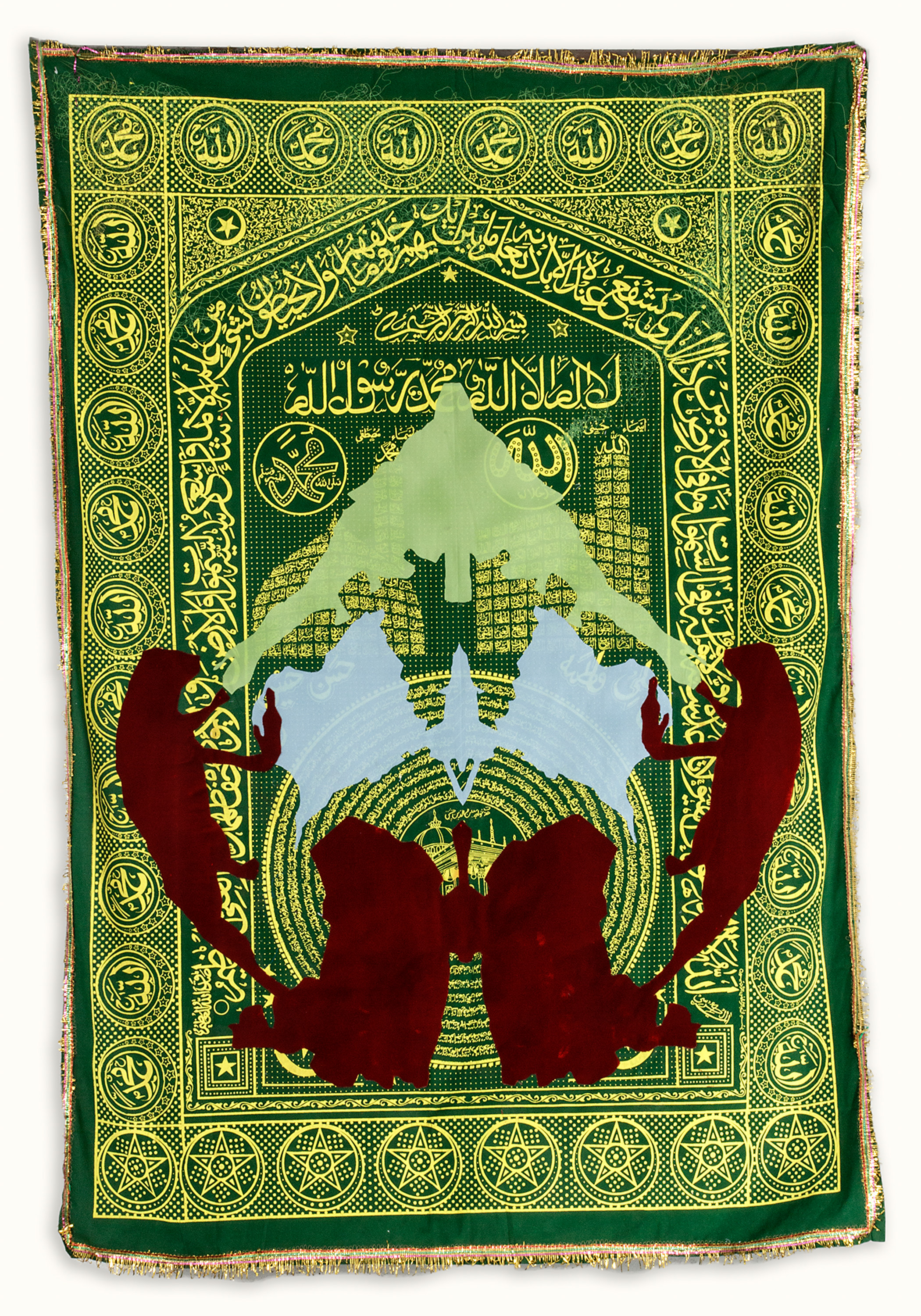
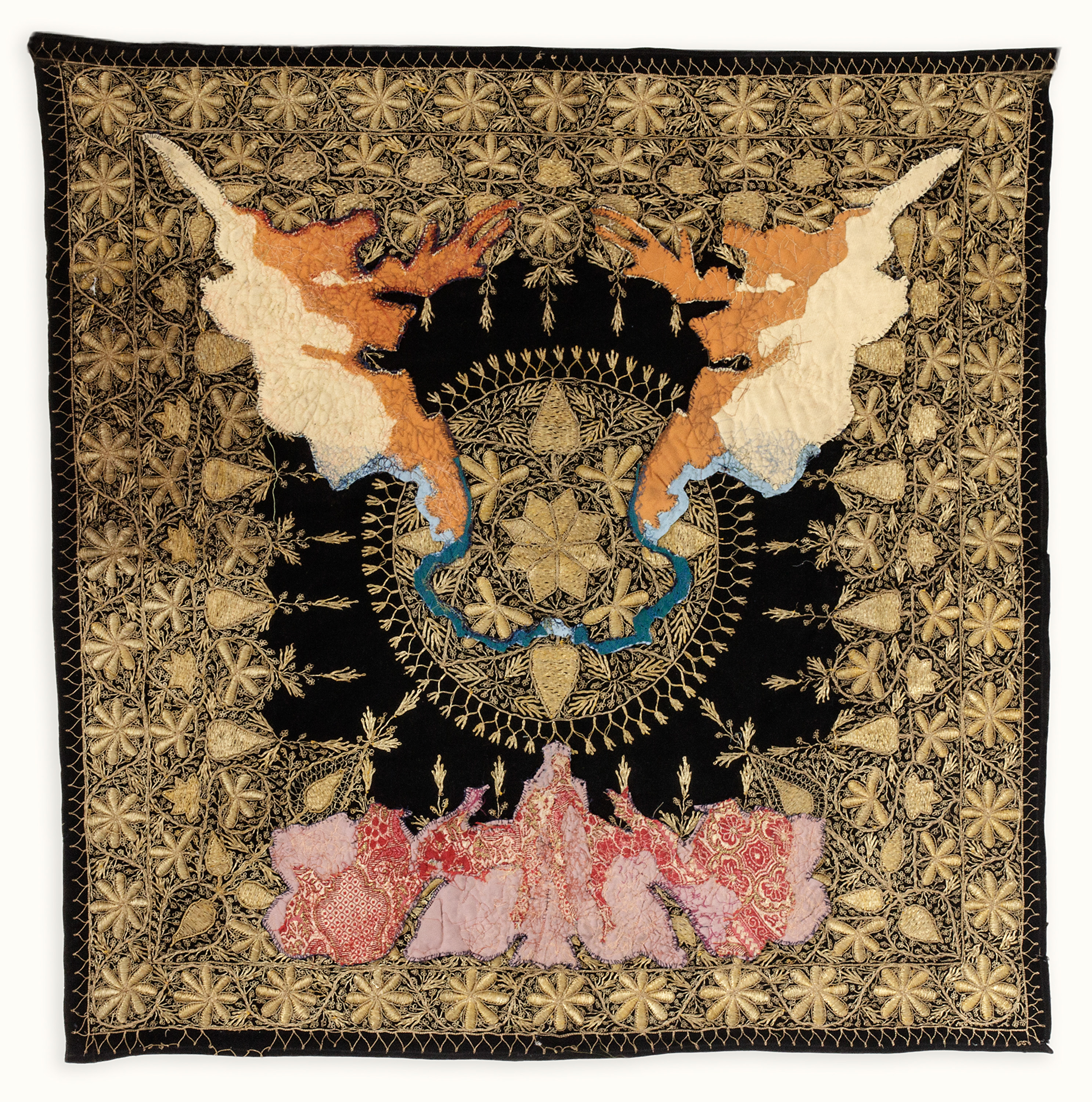

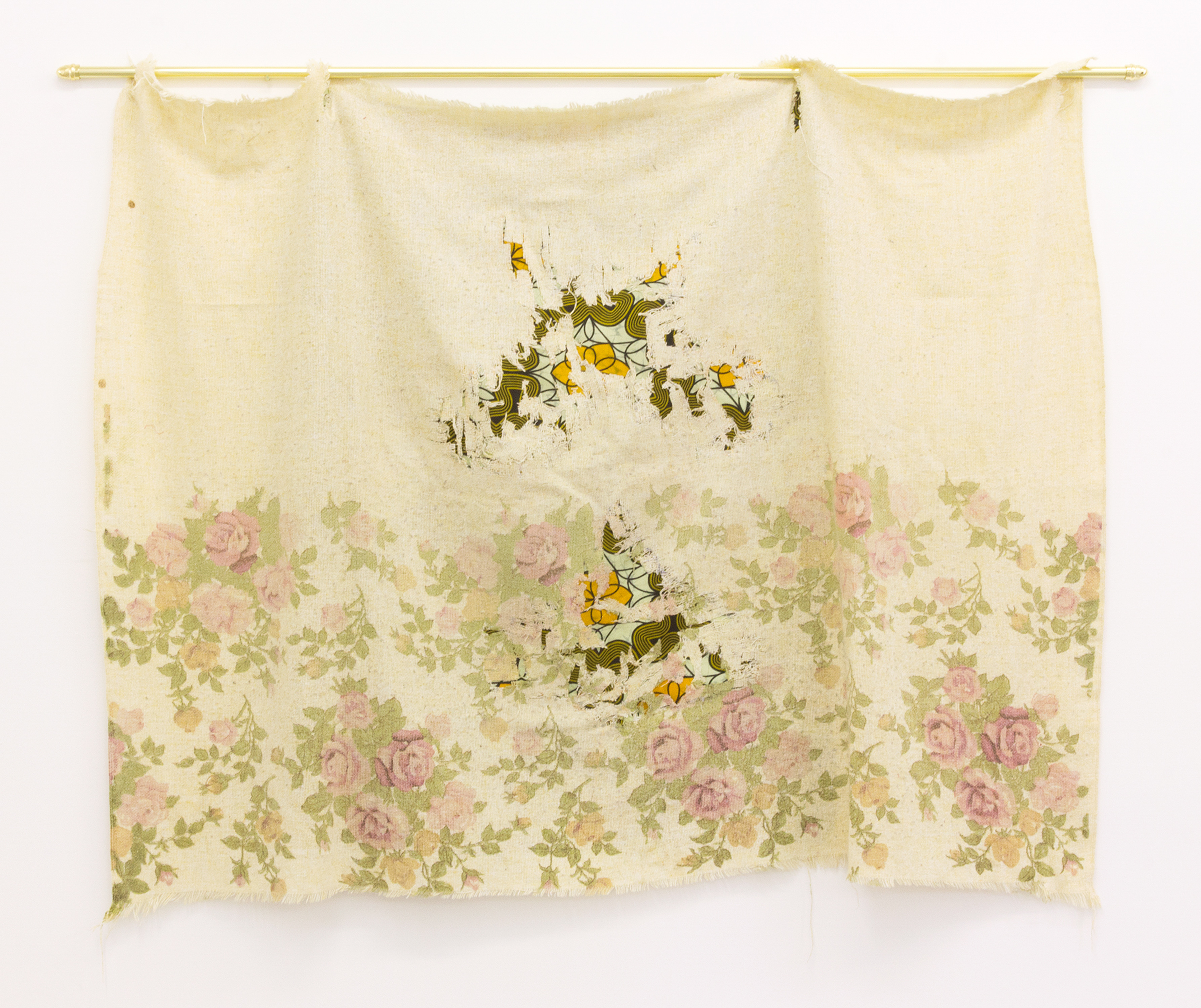
Igshaan Adams’ work investigates hybrid identity, particularly in relation to race and sexuality. Adams was raised in a community racially classified in South Africa as ‘coloured’ under apartheid legislature. The term ‘coloured’ is still used in South Africa to refer to the creole community of mixed raced origins. An observant but liberal Muslim raised by Christian grandparents, Adams occupies a precarious place in his religious community because of his homosexuality. His work speaks to his experiences of racial, religious and sexual liminality, but breaks with a strong representational convention in recent South African art. Adams uses the material and formal iconographies of Islam and ‘coloured’ culture to develop a more equivocal, phenomenological approach towards these concerns.
The sculptures, installations, tapestries and banners constituting Parda were conceived during Adams’ participation in the Sommerakademie at the Zentrum Paul Klee in Bern in 2014, guest curated by Raimundas Malasauskas. The works draw from Hermann Rorschach’s inkblot tests, and seek to explore the idea of exposing underlying beliefs, mental patterns and blindspots through analysing projections. In developing this body of work, Adams sought to subjectively explore the structure of the test (form, colour, movement, and the sequence of the ten plates) and its claim to expose mental abnormalities. The title ‘Parda’ refers to a veil or a curtain; a flimsy protective layer that conceals an identity. In Islam it refers to the covering of a women’s face as prescribed by Sharia laws and has become a symbol of the oppression of women in some parts of the Muslim world.
Apparent in Adams’ work is “the vital role that fabric as a medium plays in his artistic dialogues. Some of Adams’ earliest childhood memories include going to work with his mother on a Saturday. His mother was a machinist – constantly crafting a range of textiles – and this environment started to cultivate Adams’ passion for material and tactile mediums. [His] use of textiles exemplifies the strong feminine influence during his formative years, when the matriarchs in his family had a significant impact on him. It echoes the domestic environment, a prevalent theme in Adams’ oeuvre, as well as raising issues of sexuality and the questioning of stereotypes.”
– Daniel Hewson, ‘Bright Young Things.’ ARTsouthAFRICA, December 2014
The sculptures, installations, tapestries and banners constituting Parda were conceived during Adams’ participation in the Sommerakademie at the Zentrum Paul Klee in Bern in 2014, guest curated by Raimundas Malasauskas. The works draw from Hermann Rorschach’s inkblot tests, and seek to explore the idea of exposing underlying beliefs, mental patterns and blindspots through analysing projections. In developing this body of work, Adams sought to subjectively explore the structure of the test (form, colour, movement, and the sequence of the ten plates) and its claim to expose mental abnormalities. The title ‘Parda’ refers to a veil or a curtain; a flimsy protective layer that conceals an identity. In Islam it refers to the covering of a women’s face as prescribed by Sharia laws and has become a symbol of the oppression of women in some parts of the Muslim world.
Apparent in Adams’ work is “the vital role that fabric as a medium plays in his artistic dialogues. Some of Adams’ earliest childhood memories include going to work with his mother on a Saturday. His mother was a machinist – constantly crafting a range of textiles – and this environment started to cultivate Adams’ passion for material and tactile mediums. [His] use of textiles exemplifies the strong feminine influence during his formative years, when the matriarchs in his family had a significant impact on him. It echoes the domestic environment, a prevalent theme in Adams’ oeuvre, as well as raising issues of sexuality and the questioning of stereotypes.”
– Daniel Hewson, ‘Bright Young Things.’ ARTsouthAFRICA, December 2014